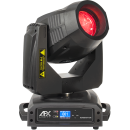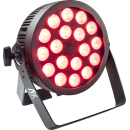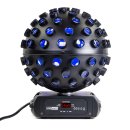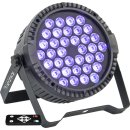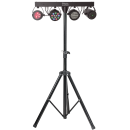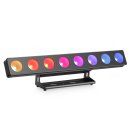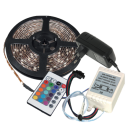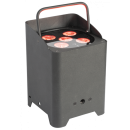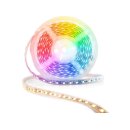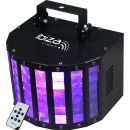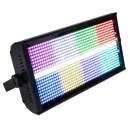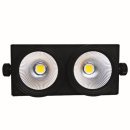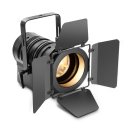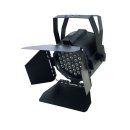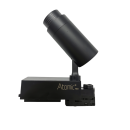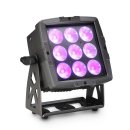Complete Guide To Stage And Theatre Lighting: Enhance Your Performance
Stage and theatre lighting is essential to creating atmosphere, highlighting performers, and enhancing the overall experience of a live show. From basic spotlights to advanced moving lights, understanding how to use different types of lighting effectively can elevate any performance. In this guide, we’ll explore the key types of lighting, control systems like DMX, and the techniques that will help you create dynamic and professional lighting for your stage production.
The Different Types Of Stage Lighting
When setting up stage lighting, it's important to know the various types of lights available and how they serve different purposes. **Spotlights** are commonly used to highlight specific performers or objects on stage, giving them focus and drawing the audience's attention. **Ellipsoidal Reflector Spotlights (ERS)**, also known as profile lights, provide a strong, focused beam that can be shaped and controlled with shutters to create sharp edges or soft transitions.
**PAR cans** (Parabolic Aluminized Reflector) are versatile lights that produce a broad, unfocused beam. These are excellent for general stage washes and for filling larger areas with light. **LED lights** are energy-efficient options that can change colors, making them great for creating mood and atmosphere with a range of hues. Lastly, **moving lights** are motorized fixtures that can pan, tilt, and change colors or gobos (light patterns), allowing for dynamic and changing effects throughout a performance.
DMX Control: The Heart Of Stage Lighting
One of the most important aspects of stage lighting is controlling it. **DMX (Digital Multiplex)** is the standard protocol for lighting control, allowing you to synchronize multiple lighting fixtures from a single control board. With DMX, you can manage everything from light intensity and color changes to the movement of automated lights.
A **DMX control system** is essential for coordinating lighting cues during live performances. By pre-programming different lighting scenes, you can ensure smooth transitions and effects that align perfectly with the timing of the show. This gives you full creative control, enabling you to make lighting a central part of the storytelling process.
The Importance Of Lighting Angles And Positioning
In stage lighting, the positioning and angle of the lights are just as important as the lights themselves. A well-thought-out lighting plan considers where lights should be placed to highlight key areas of the stage. For example, **front lighting** is used to illuminate performers’ faces, ensuring the audience can see expressions clearly. However, it must be balanced with **back lighting** to add depth and prevent the actors from appearing flat.
**Side lighting** can be used to add dramatic effects and accentuate the movement of performers, particularly in dance productions. **Top lighting** is effective for creating pools of light and highlighting specific areas of the stage without lighting up the entire set. By using a combination of these lighting angles, you can create a dynamic visual experience that complements the performance.
Using Color And Lighting Effects In Stage Production
Color is a powerful tool in stage lighting, as it can influence the mood and tone of a scene. **Gel filters** or color wheels can be used to change the color of the light emitted from fixtures like LED or PAR lights. Warm colors like reds and yellows evoke feelings of warmth, passion, or intensity, while cooler tones like blues and greens can create a sense of calm or mystery.
**Gobos** are another popular lighting effect used in stage production. These stencils or templates placed inside a light fixture can cast specific patterns on the stage, like foliage, windows, or abstract shapes. Gobos are commonly used with ellipsoidal lights to project images that can add texture or context to the set design. By combining different colors and effects, you can create a visual narrative that enhances the story being told on stage.
Moving Lights: Adding Dynamics To The Performance
**Moving lights** are advanced fixtures that bring a high level of dynamism to stage lighting. These lights can move across the stage, change focus, alter color, and even shift between different gobos to create varied lighting effects throughout a show. Moving lights are often controlled through DMX systems, which allow for precise and automated control of all their functions.
In musical concerts, theatre performances, and large-scale productions, moving lights are frequently used to keep the lighting dynamic and responsive to the action on stage. Whether it's following performers or enhancing a musical number with shifting light patterns, moving lights can create an immersive atmosphere that transforms the entire stage setup.
Combining Lighting With Set Design For Maximum Impact
Stage lighting and set design go hand in hand. The right lighting can highlight key elements of the set, while strategic set design can enhance the way lights interact with the space. For example, reflective surfaces on the set can bounce light around, creating interesting effects, while dark materials can absorb light, creating a sense of shadow and depth.
When designing a stage, it's important to consider how the lighting will interact with the physical set. By planning ahead, you can ensure that the lighting complements the set design, helping to create a cohesive and visually engaging experience for the audience. Whether you're using simple spotlights or complex moving lights, integrating lighting with set design ensures that both elements work together to elevate the overall production.



